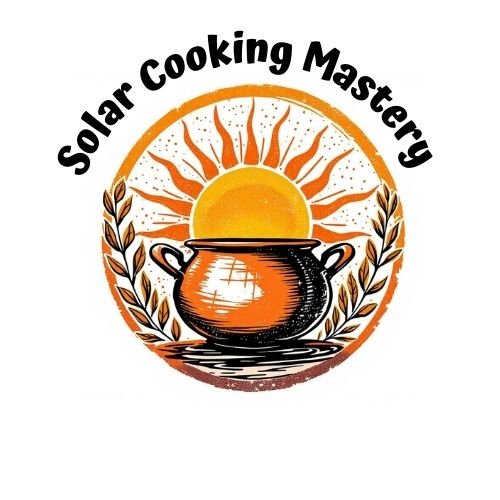Face your solar oven south to maximize sun exposure throughout the day. You'll want to track the sun's movement by adjusting your oven's position every 30 minutes, which can triple your cooking heat compared to a stationary setup. Choose dark-colored cookware like cast iron or dark stainless steel, as these materials absorb sunlight more effectively and maintain consistent temperatures. While these sun-following techniques will dramatically improve your solar cooking results, proper sun protection is equally important – wear protective clothing and take regular breaks. There's much more to discover about optimizing your solar cooking experience.
Position Your Solar Oven South

When positioning your solar oven, a south-facing orientation is essential for maximizing its cooking performance. In the northern hemisphere, this direction captures the most direct sunlight throughout the day, helping you maintain consistent cooking temperatures, especially for slow-cooked meals.
You'll want to place your oven on a stable, level surface to prevent accidents and make the most of its reflective capabilities. This positioning lets you efficiently use reflectors to direct additional sunlight into the cooking chamber.
When you're setting up, make certain there's nothing blocking the sun's path to your oven. Think of your solar oven like a sunflower that needs to face south to thrive – the right orientation will make all the difference in your cooking results. For optimal heat capture while cooking, it's recommended to reposition every 30 minutes.
Track Every Thirty Minutes
Although mechanical tracking systems exist, manually adjusting your solar oven every 30 minutes will guarantee peak cooking performance throughout the day.
You'll need to keep your solar panels within 30 degrees of the sun's position for best efficiency. While automated systems use photo diodes and motors to track sunlight, you can achieve similar results with simple manual adjustments.
Following a step-by-step procedure will help ensure consistent tracking success throughout the cooking process.
If you've mounted your reflectors on hinges, you'll find it easier to make these frequent alignments without moving the entire cooker.
Use the shadows cast by your oven to gauge when it's time for an adjustment – when shadows start appearing on your collector, you'll know it's time to realign.
Don't skip these regular checks, as proper tracking can greatly impact your cooking time and temperature.
Dark Cookware Catches More Sun

The right cookware plays a major role in solar cooking success. You'll want to opt for dark-colored pots and pans since they absorb sunlight more effectively, similar to how darker surfaces naturally attract more heat.
Cast iron and dark stainless steel are particularly good choices for solar cooking. Regular maintenance with Barkeepers Friend paste will keep these dark surfaces clean and efficient.
While your dark cookware is working hard to catch those rays, don't forget about your own sun protection. Even as you're monitoring your meals, you'll need to shield yourself from UV radiation.
Wear sunscreen, protective clothing, and a hat, especially since you'll be moving your cookware every thirty minutes to follow the sun's path.
Remember that factors like time of day, location, and cloud cover will affect both your cooking results and your sun exposure risk.
Frequently Asked Questions
Can I Use My Solar Oven on Cloudy or Partly Cloudy Days?
Yes, you can use your solar oven on cloudy days, but it'll take longer to cook and reach lower temperatures. You'll need to extend cooking times and may want to choose quick-cooking foods for better results.
What Should I Do if My Food Isn't Fully Cooked by Sunset?
If your food isn't done by sunset, you can transfer it to a conventional oven to finish cooking, or keep it insulated overnight in the solar oven and continue cooking the next sunny day.
How Do I Prevent Food From Sticking to Solar Oven Cookware?
To prevent sticking, grease your cookware with oil or cooking spray, use non-stick liners, and choose dark, thin-walled pots. Don't forget to add a small amount of liquid and stir occasionally while cooking.
Is It Safe to Leave My Solar Oven Unattended While Cooking?
You shouldn't leave your solar oven unattended, as you need to adjust it every 30 minutes to track the sun, monitor food temperatures, and guarantee safety. Regular supervision helps prevent potential hazards and cooking issues.
How Can I Tell if My Solar Oven Has Reached the Right Temperature?
You'll know your solar oven's ready by using a thermometer to check internal temperature. Watch for your target range – most cooking needs 300-350°F. Keep your temperature probe calibrated for accurate readings.
In Summary
You'll get the most from your solar cooking by following these three sun-smart habits. Point your oven south for maximum exposure, rotate it every half hour to catch direct rays, and use dark-colored pots that absorb heat efficiently. When you stick to these basic principles, you'll cook meals faster and more evenly. These simple adjustments make solar cooking both effective and rewarding.





Leave a Reply